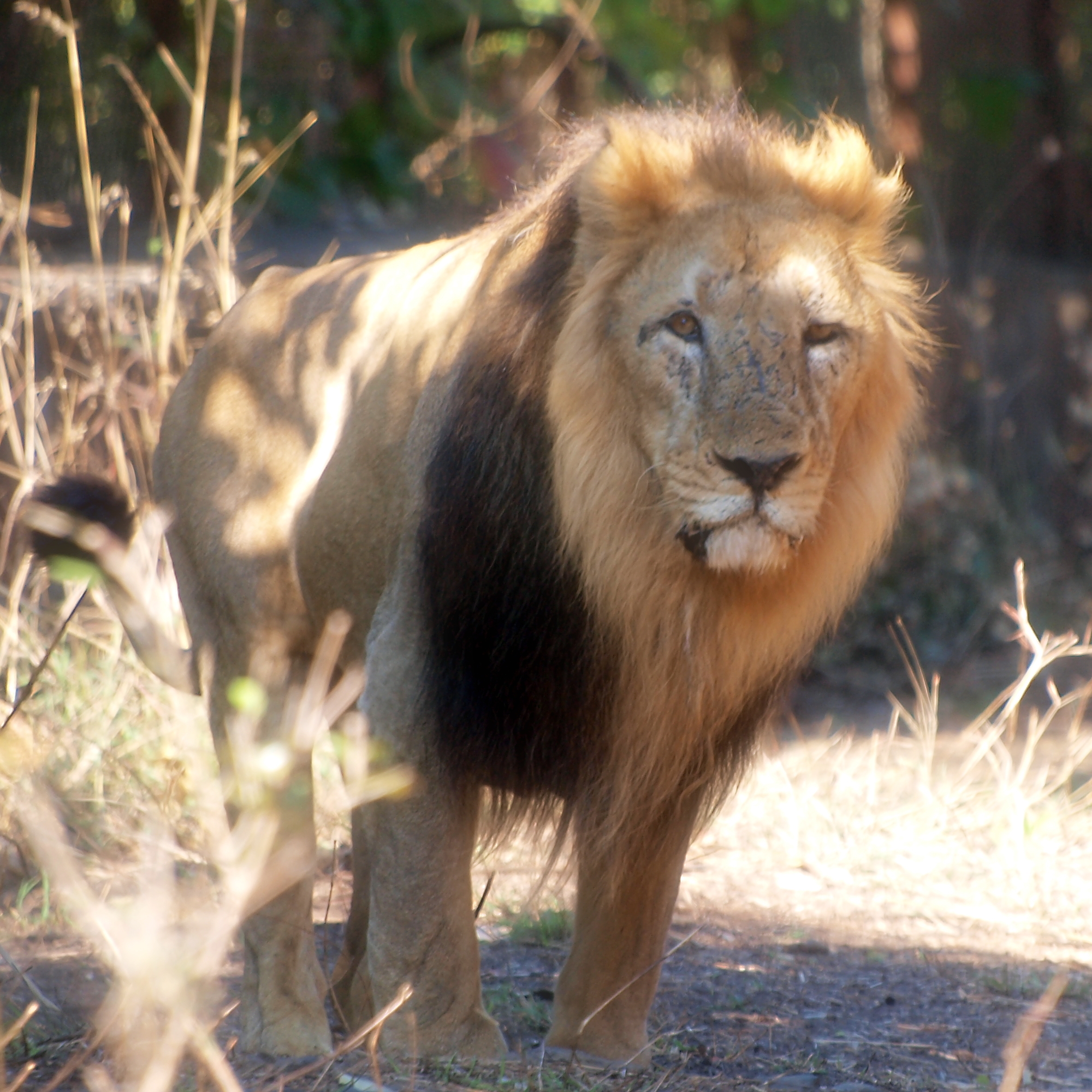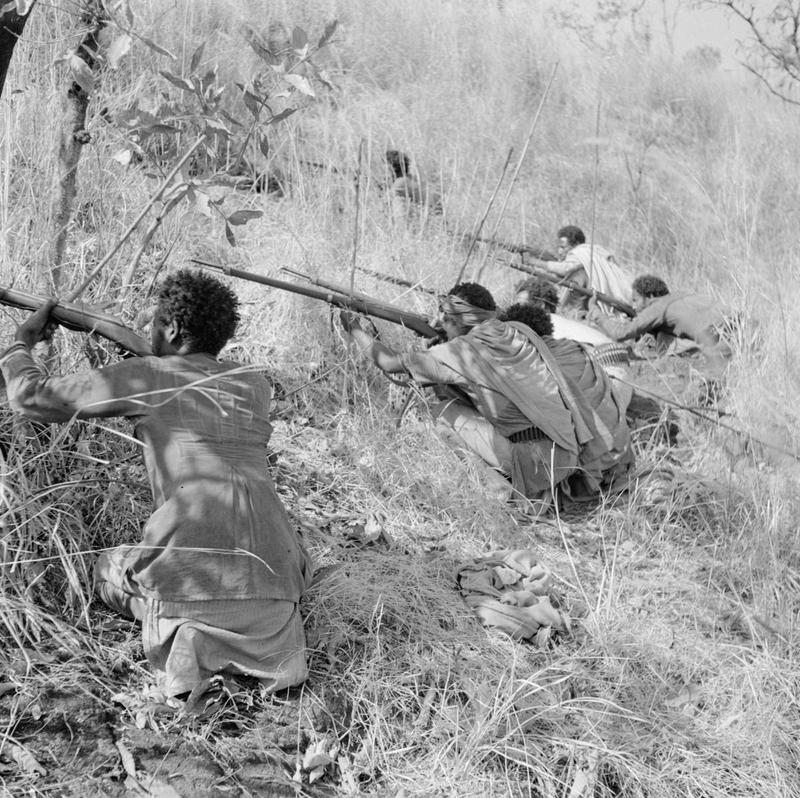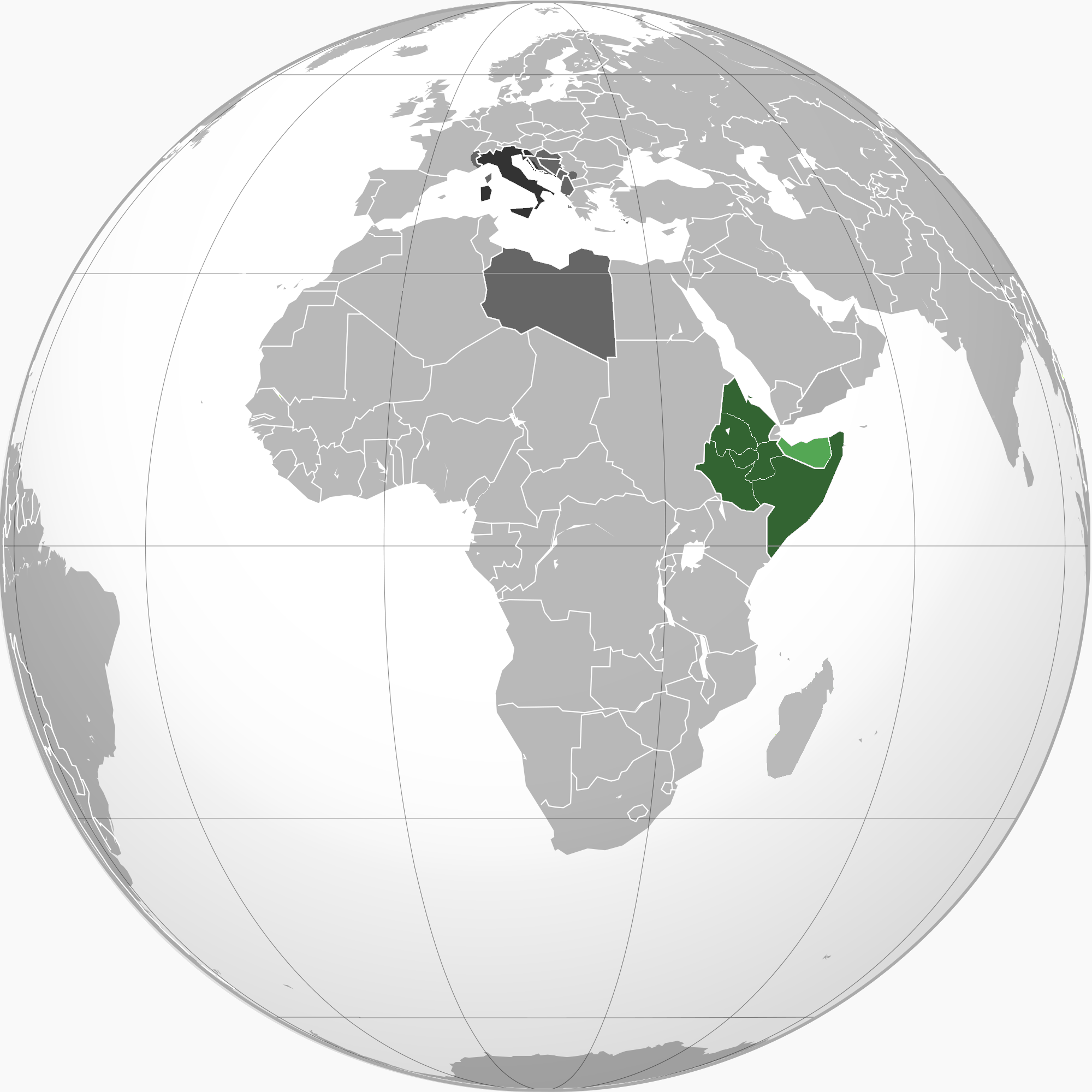|
Chindits
The Chindits, officially known as Long Range Penetration Groups, were special operations units of the British and Indian armies which saw action in 1943–1944 during the Burma Campaign of World War II. Brigadier Orde Wingate formed them for long-range penetration operations against the Imperial Japanese Army, especially attacking lines of communication deep behind Japanese lines. The name Chindits is a corrupted form of ''Chinthe'' (),Brayley 2002, p. 18. Burmese word for "lion". Their operations featured long marches through extremely difficult terrain, undertaken by underfed troops often weakened by diseases such as malaria and dysentery. Controversy persists over the extremely high casualty rate and the debatable military value of the achievements of the Chindits. Background and formation During the East African Campaign of 1940–41, Wingate – under General Archibald Wavell, Commander-in-Chief of the Middle East Command – had begun to explore guerilla tact ... [...More Info...] [...Related Items...] OR: [Wikipedia] [Google] [Baidu] [Amazon] |
Orde Wingate
Major-general (United Kingdom), Major General Orde Charles Wingate, (26 February 1903 – 24 March 1944) was a senior British Army officer known for his creation of the Chindits, Chindit deep-penetration missions in Japanese-held territory during the Burma Campaign of the Second World War. Wingate was an exponent of unconventional military thinking and the value of surprise tactics. Wingate was a dedicated Christian Zionist. In Mandatory Palestine, he set up a joint British–Jewish counter-insurgency unit called the Special Night Squads. Under the patronage of the area commander Archibald Wavell, 1st Earl Wavell, Archibald Wavell, Wingate was given increasing latitude to put his ideas into practice during the Second World War. He created units in Ethiopian Empire, Abyssinia and Burma. At a time when Britain was in need of morale-boosting generalship, Wingate attracted Prime Minister of the United Kingdom, British Prime Minister Winston Churchill's attention with a self-reliant ... [...More Info...] [...Related Items...] OR: [Wikipedia] [Google] [Baidu] [Amazon] |
Walter David Alexander Lentaigne
Lieutenant General Walter David Alexander Lentaigne, (15 July 1899 – 24 June 1955), also known as Joe Lentaigne, was a senior officer in the British Indian Army. Early life Lentaigne was born the elder son of Justice Benjamin Plunkett Lentaigne of the Burma High Court. He was educated at The Oratory School, Edgbaston, Birmingham. His family had origins in Navan, County Meath in Ireland, but was domiciled in then Burma (a part of British India). He was one of two domiciled European officers serving in the Independent Indian Army, the other being T. B. Henderson Brooks. Lentaigne had a brother, Commander Charles Nugent Lentaigne, who commanded , launched in July 1940, by Mary, daughter of Winston Churchill. The ship was originally to be named ''Larne''; however, after the Tribal-class ''Gurkha'' was sunk in April 1940, the officers and men of the Gurkha Regiments each subscribed one day's pay to replace her, and ''Larne'' was renamed before launching. Whilst escorting a Malta ... [...More Info...] [...Related Items...] OR: [Wikipedia] [Google] [Baidu] [Amazon] |
Burma Campaign
The Burma campaign was a series of battles fought in the British colony of British rule in Burma, Burma as part of the South-East Asian theatre of World War II. It primarily involved forces of the Allies of World War II, Allies (mainly from the British Empire and the Republic of China (1912–49), Republic of China, with support from the United States) against the invading forces of the Empire of Japan. Imperial Japan was supported by the Thailand in World War II, Thai Phayap Army, as well as two Collaboration with Imperial Japan, collaborationist independence movements and armies. Nominally independent puppet states were established in the conquered areas and some Saharat Thai Doem, territories were annexed by Thailand. In 1942 and 1943, the international Allied force in British Raj, British India launched Burma campaign (1942–1943), several failed offensives to retake lost territories. Burma campaign 1944, Fighting intensified in 1944, and British Empire forces peaked at a ... [...More Info...] [...Related Items...] OR: [Wikipedia] [Google] [Baidu] [Amazon] |
Jungle Warfare
Jungle warfare or woodland warfare is warfare in forests, jungles, or similar environments. The term encompasses military operations affected by the terrain, climate, vegetation, and wildlife of densely-wooded areas, as well as the strategies and tactics used by military forces in these situations and environments. The jungle has a variety of effects on military operations. Dense vegetation can limit lines of sight and arcs of fire, but can also provide ample opportunity for camouflage and plenty of material with which to build fortifications. Jungle terrain, often without good roads, can be inaccessible to vehicles and so makes Military logistics, logistical supply and transport difficult, which in turn places a premium on air mobility. The problems of transport make engineering resources important as they are needed to improve roads, build bridges and airfields, and improve water supplies. Jungle environments can also be inherently unhealthy, with various tropical diseases tha ... [...More Info...] [...Related Items...] OR: [Wikipedia] [Google] [Baidu] [Amazon] |
Chinthe
''Chinthe'' ( (); (); ()) is the Burmese language, Burmese word for 'Asiatic lion, lion'. The wiktionary:leograph, leograph of ''Chinthe'' is a highly stylized lion commonly depicted in Burmese iconography and Myanmar architecture, architecture, especially as a pair of guardians flanking the entrances of Buddhist pagodas and ''kyaung'' (or Buddhist monasteries). Natural lion Contrary to popular belief, the ''Chinthe'' is not a mythical creature but instead an entirely natural lion, although often associated with myths and legends. The Burmese leograph is related to other stylized lions in the Asian region, including the ''sing'' (สิงห์) of Thailand, Cambodia, Laos, and the ''simha'' (සිංහ) of Sri Lanka, where it is featured prominently on the Sri Lankan rupee. It is also related to East Asian leographs, such as the Chinese guardian lions, guardian lions of China, ''komainu'' of Japan, ''shisa'' of Okinawa and Snow Lion of Tibet. Origins The story of why th ... [...More Info...] [...Related Items...] OR: [Wikipedia] [Google] [Baidu] [Amazon] |
Special Forces
Special forces or special operations forces (SOF) are military units trained to conduct special operations. NATO has defined special operations as "military activities conducted by specially designated, organized, selected, trained and equipped forces using unconventional techniques and modes of employment". Special forces emerged in the early 20th century, with a significant growth in the field during World War II, when "every major army involved in the fighting" created formations devoted to special operations behind enemy lines. Depending on the country, special forces may perform functions including Airborne forces, airborne operations, counter-insurgency, counter-terrorism, foreign internal defense, Covert operations, covert ops, Direct action (military), direct action, Hostage crises, hostage rescue, high-value targets/Manhunt (military), manhunt, intelligence, surveillance, target acquisition, and reconnaissance, intelligence operations, Mobility (military), mobility o ... [...More Info...] [...Related Items...] OR: [Wikipedia] [Google] [Baidu] [Amazon] |
Gideon Force
Gideon Force was a small United Kingdom, British and African special force, a with the Sudan Defence Force, Ethiopian Army of the Ethiopian Empire, regular forces and ( for Patriots). Gideon Force fought the Italy, Italian occupation in Ethiopia, during the East African Campaign (World War II), East African Campaign of the Second World War. The leader and creator of the force was Major (later Colonel) Orde Wingate. At its peak, Gideon Force had fifty officers, twenty British NCOs, 800 trained Sudanese troops and 800 part-trained Ethiopian regulars, a few mortars but no artillery and no air support, except for intermittent bombing sorties. The force operated in difficult country at the end of a long, tenuous supply-line, on which perished nearly all of the used as beasts of burden. Gideon Force and the ejected the Italian forces commanded in Ethiopia by General Guglielmo Nasi (the conqueror of British Somaliland). The campaign took six weeks; and troops were captured along ... [...More Info...] [...Related Items...] OR: [Wikipedia] [Google] [Baidu] [Amazon] |
East African Campaign (World War II)
The East African campaign (also known as the Abyssinian campaign) was fought in East Africa during the Second World War by Allies of World War II, mainly from the British Empire, against Kingdom of Italy, Italy and its colony of Italian East Africa, between June 1940 and November 1941. The British Middle East Command with troops from the United Kingdom, Union of South Africa, South Africa, British Raj, British India, Uganda Protectorate, British Kenya, Kenya, British Somaliland, Somaliland, British West Africa, West Africa, Northern Rhodesia, Northern and Southern Rhodesia, Anglo-Egyptian Sudan, Sudan and Nyasaland participated in the campaign. These were joined by the Allied of Belgian Congo, Ethiopian Empire, Imperial Ethiopian Arbegnoch (resistance forces) and a small unit of Free French Forces. Italian East Africa was defended by the (Italian East African Armed Forces Command), with units from the (Royal Army), (Royal Air Force) and (Royal Navy). The Italian forces inclu ... [...More Info...] [...Related Items...] OR: [Wikipedia] [Google] [Baidu] [Amazon] |
Long-range Penetration
A long-range penetration patrol, group, or force is a special operations unit capable of operating long distances behind enemy lines far away from direct contact with friendly forces as opposed to a Long Range Reconnaissance Patrol, a small group primarily engaged in scouting missions. History Though the concept of long range penetration is as old as war itself, in the modern era it is recognized as starting with Major Ralph Alger Bagnold with his 1940 Long Range Desert Group ( LRDG) in the Western Desert. The LRDG carried out operations of reconnaissance and sabotage far behind the enemy's lines in the Libyan Desert. Bagnold was an experienced desert explorer who had his LRDG trained in desert driving, navigation through using the sun and stars as well as a compass, and knowing their territory. They were supplied by all the equipment that their trucks could carry. In 1942, several British Special Operations Executive (SOE) personnel who had escaped from Singapore to Australi ... [...More Info...] [...Related Items...] OR: [Wikipedia] [Google] [Baidu] [Amazon] |
Imperial Japanese Army
The Imperial Japanese Army (IJA; , ''Dai-Nippon Teikoku Rikugun'', "Army of the Greater Japanese Empire") was the principal ground force of the Empire of Japan from 1871 to 1945. It played a central role in Japan’s rapid modernization during the Meiji period, fought in numerous conflicts including the First Sino-Japanese War, the Russo-Japanese War, World War I, the Second Sino-Japanese War, and World War II, and became a dominant force in Japanese politics. Initially formed from domain armies after the Meiji Restoration, it evolved into a powerful modern military influenced by French and German models. The IJA was responsible for several overseas military campaigns, including the invasion of Manchuria, involvement in the Boxer Rebellion, and fighting across the Asia-Pacific during the Pacific War. Notorious for committing widespread Japanese war crimes, war crimes, the army was dissolved after Japan's surrender in 1945, and its functions were succeeded by the Japan Ground Self-D ... [...More Info...] [...Related Items...] OR: [Wikipedia] [Google] [Baidu] [Amazon] |
Lion
The lion (''Panthera leo'') is a large Felidae, cat of the genus ''Panthera'', native to Sub-Saharan Africa and India. It has a muscular, broad-chested body (biology), body; a short, rounded head; round ears; and a dark, hairy tuft at the tip of its tail. It is sexually dimorphic; adult male lions are larger than females and have a prominent mane. It is a social species, forming groups called prides. A lion's pride consists of a few adult males, related females, and cubs. Groups of female lions usually hunt together, preying mostly on medium-sized and large ungulates. The lion is an apex predator, apex and keystone predator. The lion inhabits grasslands, savannahs, and shrublands. It is usually more diurnality, diurnal than other wild cats, but when persecuted, it adapts to being active nocturnality, at night and crepuscular, at twilight. During the Neolithic period, the lion ranged throughout Africa and Eurasia, from Southeast Europe to India, but it has been reduced to fr ... [...More Info...] [...Related Items...] OR: [Wikipedia] [Google] [Baidu] [Amazon] |
Lines Of Communication
A line of communication (or communications) is the route that connects an operating military unit with its supply base. Supplies and reinforcements are transported along the line of communication. Therefore, a secure and open line of communication is vital for any military force to continue to operate effectively. Prior to the advent of the use of the telegraph and radio in warfare, lines of communication were also the routes used by dispatch riders on horseback and runners to convey and deliver orders and battle updates to and from unit commanders and headquarters. Thus, a unit whose lines of communication were compromised was vulnerable to becoming isolated and destroyed, as the means for requesting reinforcements and resupply is lost. The standard military abbreviation is LOC. There is also SLOC for Sea Line of Communication, GLOC for Ground Line of Communication, or ALOC for Air Line of Communication. The interdiction of supplies and reinforcements to units closer to the ... [...More Info...] [...Related Items...] OR: [Wikipedia] [Google] [Baidu] [Amazon] |










